
Dr Ryan Danby, Director, and Associate Professor of the School of Environmental Studies at Queen’s University has discovered that the Bathurst caribou herd, one of Canada’s 21 major migrating tundra herds, has declined from a past high of 500,000 to around 10,000 today.

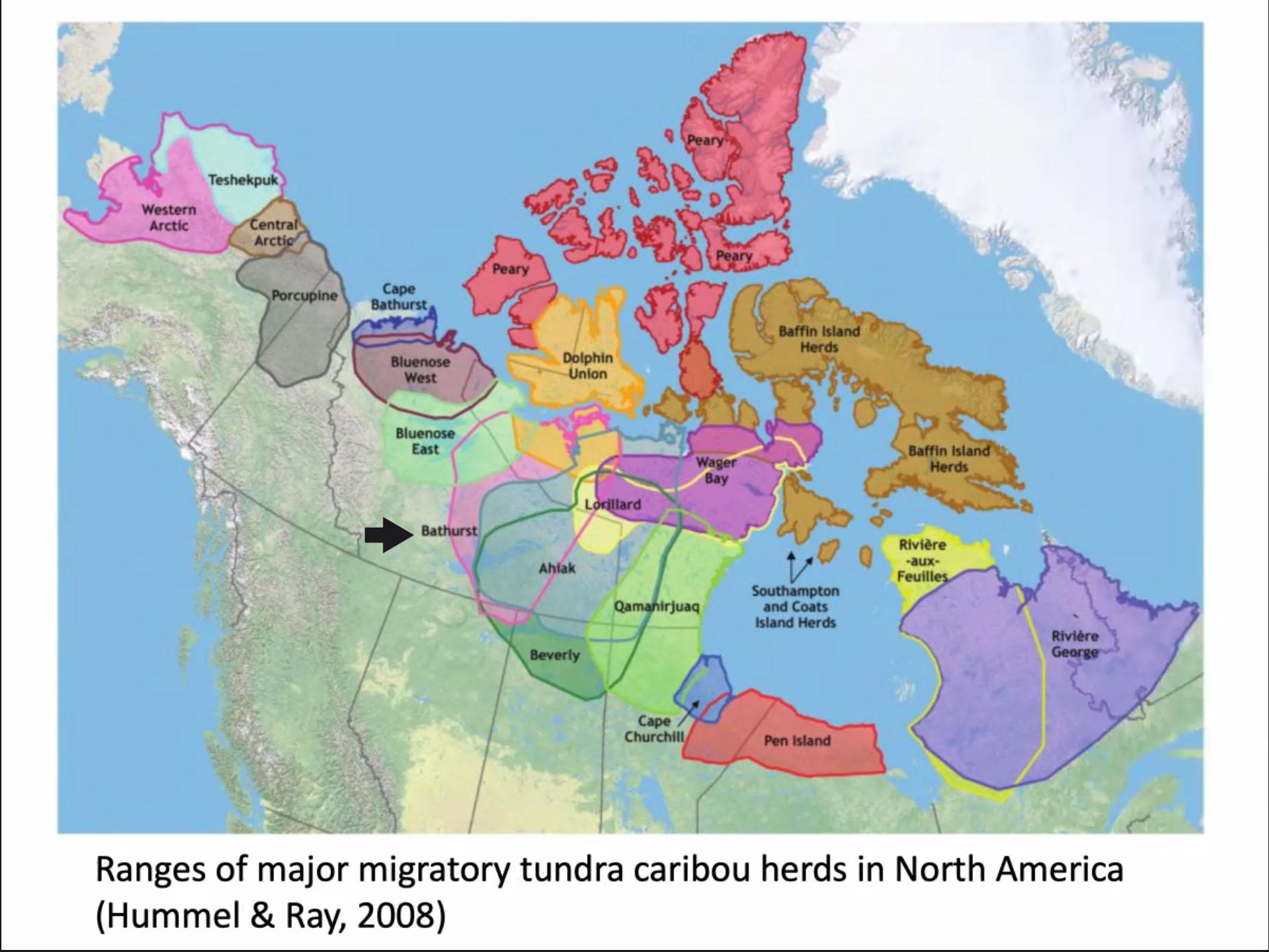
Herds of up to 1,000,000 caribou were once a spectacular sight roaming north for the summer and back south for the winter feeding on lichen in the winter and deciduous broad-leaf plants in the summer.
When they reach the northernmost point of their range, calfing occurs during a one week period and they start moving south again.
The Migratory Movement of Barren Land Caribou over One Cycle
(2 min, 12 sec)
There are three different eco-types of the species - Mountain caribou, Boreal caribou, and Migratory Tundra caribou. We do know that the southern limit of their habitat has shifted north as development expands.
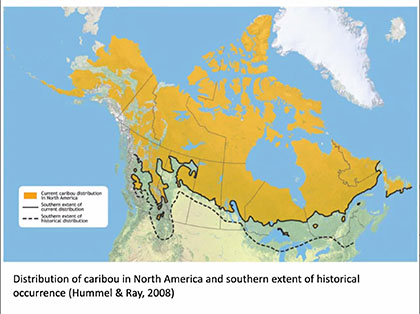 | 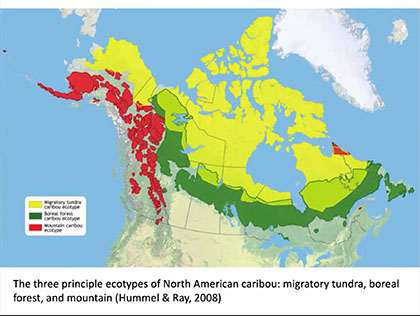 |
Why are the numbers declining or fluctuating? Wildfires, environmental changes, and human behavior are among the factors being studied.
Is there a common cause since many herds are experiencing the same decline? Dr. Danby suggests it may point to an environmental impact.
He and his students are analyzing the Terra and Aqua satellites’ data to help them determine what is happening. A 2017 analysis shows long-term changes have occurred over an extended period, beginning in 2000. The images show a great change, heavily influenced by forest fires and a general greening of the land not affected by forest fires.
| |||
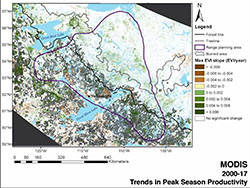 |  | 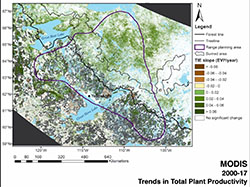 | |
The growing season has increased, in many cases, by as much as 2 months during that time.
There has also been large-scale snow melt as a big part of this change. This has caused Danby to hypothesize that the greening is happening because of the declining herd population. However, the area is also seeing “shrubification”, meaning the ground cover is changing from low-growing grasses to higher-growing shrubs and trees not suited to the Caribou diet.
The next step is to determine the specific levels of these various impacts. On-site research efforts, specifically examining small areas over a specific time period, are now underway.
Near the end of his presentation Danby shared pictures of the far north’s beauty. These are shared in this one-minute video.
Danby also mentioned that his grandfather, in Guelph, had been a Rotarian for some 40 years.

